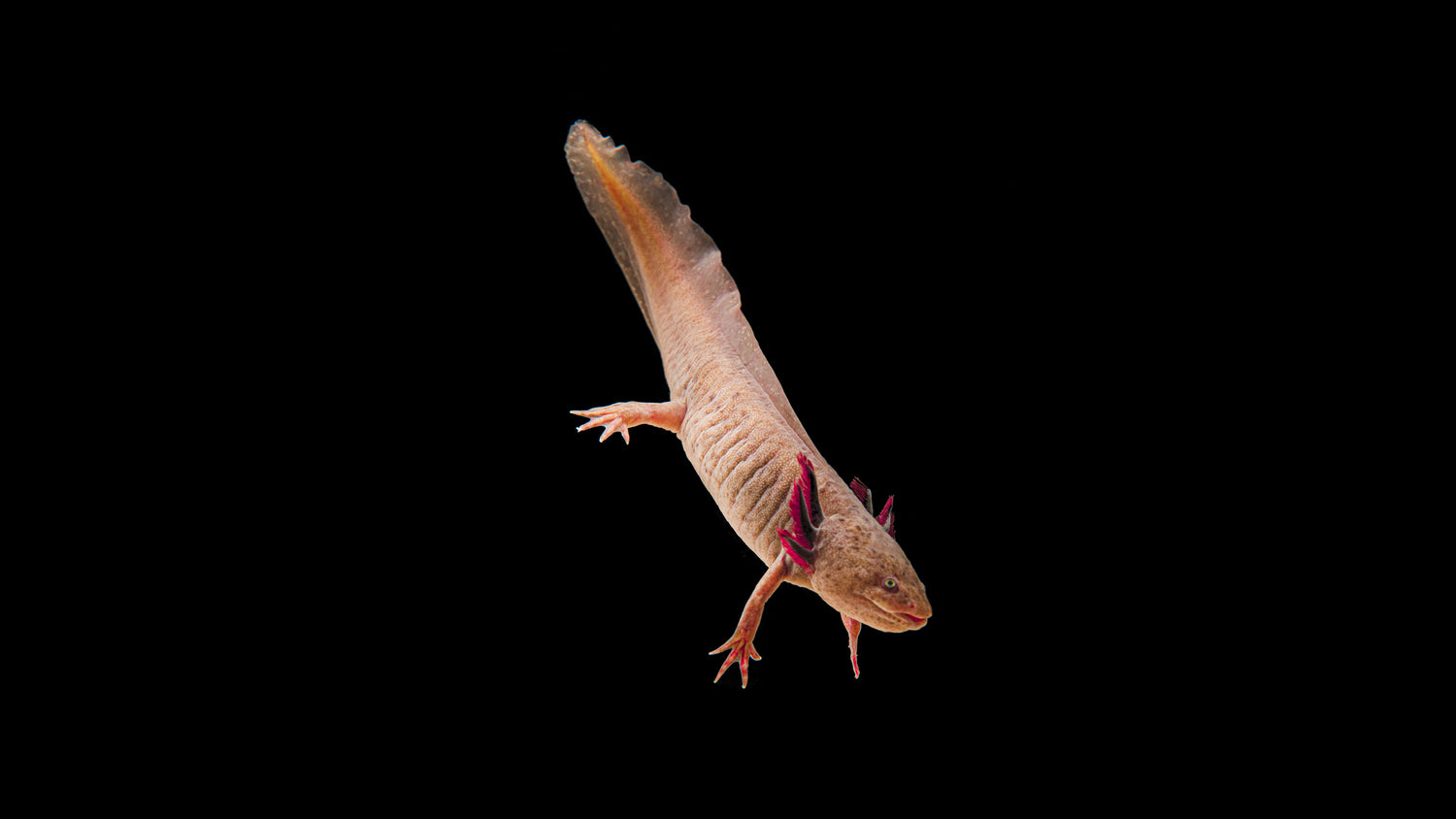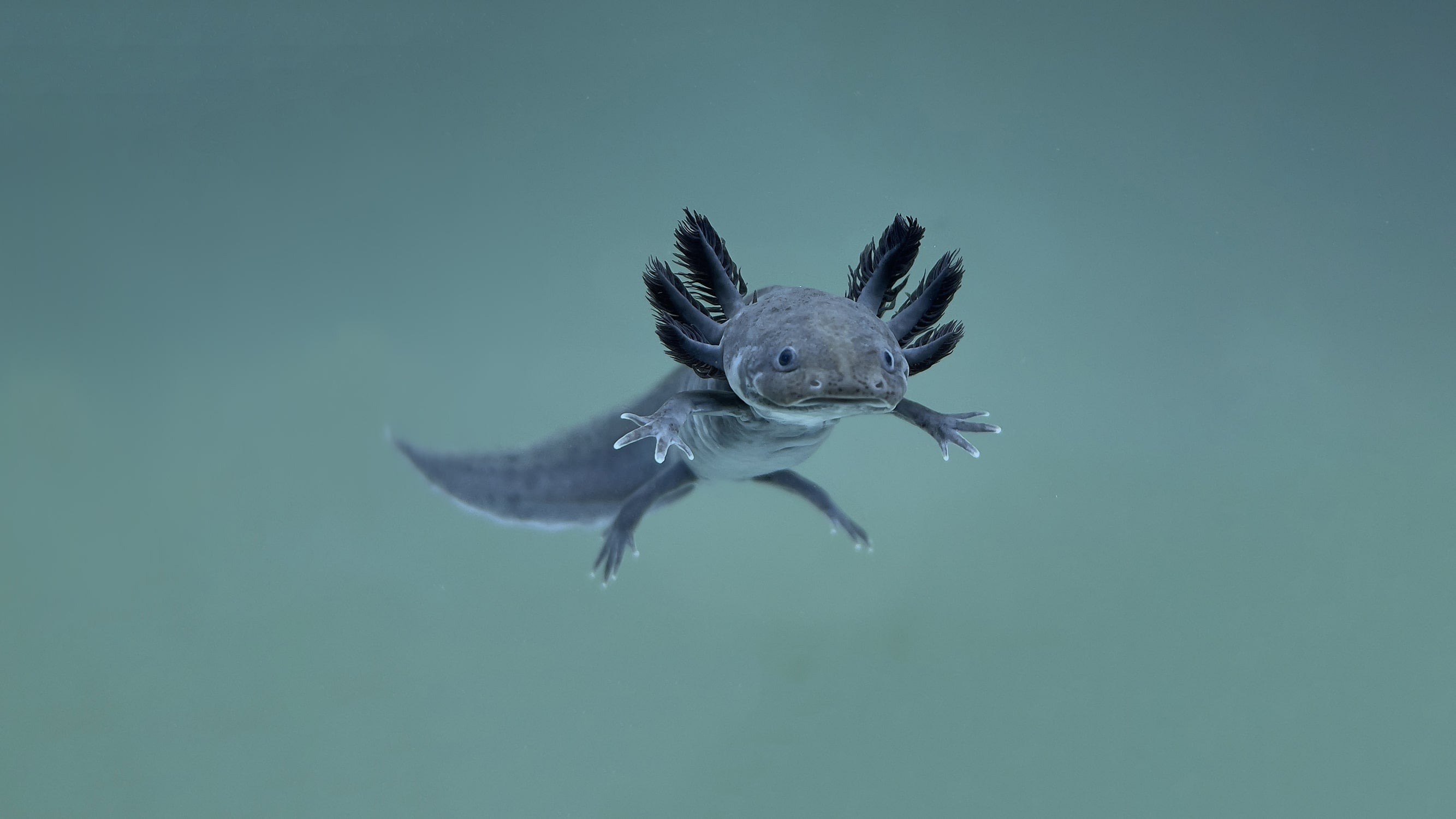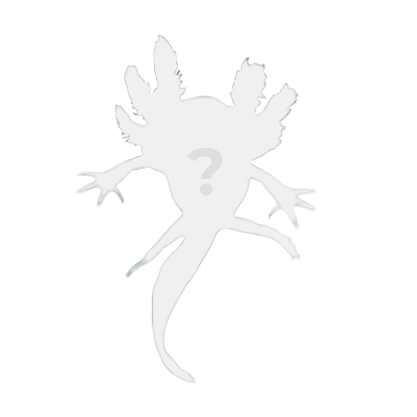Axolotls are notable for a variety of strange and wonderful features! Their flowing tail fins, their happy, dopey expressions, their feathery gills, and—what you’re probably interested in—their wide variety of colors and patterns, or morphs. Axolotls come in many different colors and patterns, as many delighted axolotl owners, breeders, and other enthusiasts have already seen!
So, how many different colors of axolotl are there? Read on and find out! You’ll even pick up some handy knowledge of chromatophores (skin-coloring cells) along the way!
White (Leucophores)
Many axolotls have a white or semi-transparent skin tone, including leucistic axolotls and albino axolotls. (These two morphs can look very similar, but you can tell the difference by looking at their eyes! Albino axolotls have white or pinkish eyes, and leucistic axolotls have dark eyes.) Some axolotls also display a large number of ‘iridophores,’ or light-reflecting pigmentation. These can appear to be white or nearly-white spots or patches on morphs like the hypomelanistic copper axolotl!
Black/Grey (Melanophores)
Melanoid axolotls, and others who carry genetic similarities, have a dark gray or black coloration. Melanoid axolotls do not have those light-reflecting pigments (iridophores), which makes them look darker and less shiny than high-iridophore morphs. Wild type axolotls also have dark spots, which are often a dark gray or black.
‘Dirty leucistic’ axolotls also possess spots of black and gray in numerous kinds of patterns, often causing ‘freckles’ on the axolotl’s head. In fact, morphs called ‘piebald axolotls’ are essentially dirty leucistics with even higher concentrations of melanophores, which gives them a two-toned appearance, like a melanoid axolotl on top and a leucistic axolotl on bottom!
A lower amount of these darker pigments is what makes an axolotl ‘hypomelanistic.’’
Yellow/Gold (Xanthophores)
Yellow or gold coloration is found in several axolotl morphs! Golden albino axolotls, as well as non-albino golden axolotls have a lot of golden coloration. Some hypomelanistic morphs, like the hypomelanistic copper axolotl, look strikingly yellow, due to the lower amounts of darker pigment that might have obscured their yellow coloration.
Red (Erythrophores)
Red pigments are one of two pigments that axolotls do not naturally produce that are usually common to aquatic salamanders/newts. This means that there are no true ‘red’ axolotls. However, copper axolotls are the closest you can get to a "red" axolotl due to their genes causing eumelanin (black/brown pigment) to instead become pheomelanin (red/brown pigment). However, these axolotls are indeed a more brownish, coppery hue than a true red.
Although, copper axolotls do possess one feature that is truly red—their pupils! Copper axolotls have red eyes, making them easy to pick out from other morphs that look similar (though we promise they’re not evil!).
Green
Green coloration by itself is also not a hue that axolotls naturally possess. Some morphs, like Wild Type axolotls, display patterns that are tinged green, but that’s usually caused by concentrations of other pigments.
However, there is a man-made addition to the list of axolotl morphs that should be mentioned! Green-fluorescent protein (GFP) axolotls have shiny green eyes, and they can glow under a blue LED light. This protein was introduced to axolotls by researchers who study the amazing regenerative qualities of axolotls. So, if you were hoping for a green axolotl, you can absolutely find one that’s at least green-eyed!
Blue (Cyanophores)
This one’s going to be a heart-breaker, we’re sorry to say. Despite appearing in some popular media, such as Minecraft, blue axolotls do not exist in nature, and no man-made product like the GFP has been introduced to make it happen. You can read more about the topic in our article, Are Blue Axolotls Real? However, hope is not lost! As noted, GFP axolotls glow under a blue or blacklight. A light-colored axolotl possessing the GFP trait can appear more blue, when under a blue or blacklight. This has the added benefit of making your axolotl appear to change colors, depending on whether or not you’ve turned on the light!
Combinations
Axolotls can technically have an infinite number of different color combinations! That is why breeders like Axolotl Planet focus so much on tracking the genetics of these amazing animals.
In addition to the combinations already listed here, our article, What are the Rarest Axolotls in the World? shows a number of axolotl morphs that combine multiple colors and patterns, to achieve beautiful results!
Axolotls are amazing creatures that are as visually striking as they are biologically incredible. We hope you’ve enjoyed learning about the different colors that make up the rainbow of axolotl morphs, and we invite you to check out our other articles to learn even more about these weird and wonderful animals!





Leave a comment
This site is protected by hCaptcha and the hCaptcha Privacy Policy and Terms of Service apply.